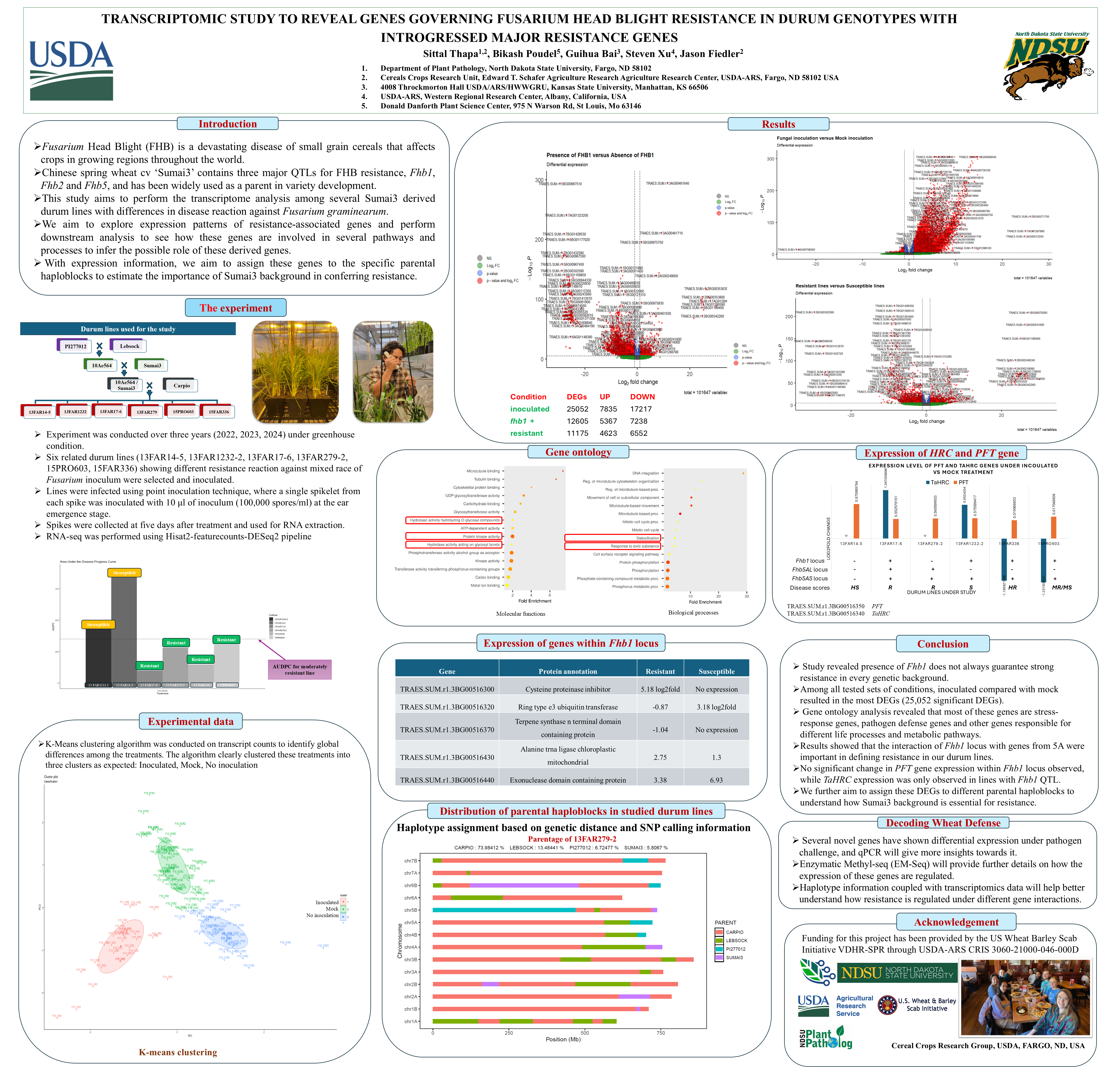Authors: Sittal Thapa 1,2, Bikash Poudel 5, Guihua Bai 3, Steven Xu 4, Jason Fiedler 2
1. Department of Plant Pathology, North Dakota State University, Fargo, ND 58102
2. USDA-ARS, Cereals Crops Research Unit, Fargo, ND 58102
3. USDA-ARS, Hard Winter Wheat Genetics Research Unit, Kansas State University, Manhattan, KS 66506
4. USDA-ARS, Western Regional Research Center, Albany, CA 94710
5. Donald Danforth Plant Science Center, 975 N Warson Rd, St Louis, MO 63146
Presenting Author: Sittal Thapa
Abstract
Fhb1 (Qfhs.ndsu-3BS) is the most
important quantitative trait locus (QTL) conferring resistance against Fusarium
head blight disease (FHB). Although this QTL has been extensively deployed in breeding
programs worldwide, the presence of Fhb1 does not always
guarantee strong resistance across different genetic backgrounds. Understanding the
genetics of resistance has been impeded by uncertainty regarding the causal
gene within the Fhb1 locus, and in durum, the underlying molecular mechanisms remain largely unexplored. To improve our
understanding of FHB resistance in durum, we performed a transcriptomic
analysis coupled with a haplotype study of six related durum lines in response to
Fusarium graminearum using a novel reference genome, Sumai 3. These
lines were derived from crosses between Sumai 3 and PI277012 cultivars, and represent lines
with or without Fhb1, 5AS (Qfhb.rwg-5A.1) and 5AL (Qfhb.rwg-5A.2),
showing varying levels of FHB resistance. Results revealed no
significant change in the expression of the PFT gene within the Fhb1
locus, while TaHRC expression was observed only in lines with the Fhb1
QTL. However, the expression pattern of TaHRC did not support its
role as the causal gene conferring resistance. Instead, results showed that
the interaction of the Fhb1 locus with genes from 5A plays a key role in
defining FHB resistance. Fusarium head blight susceptibility of lines carrying Fhb1 was
further studied using haplotype analysis to understand how genes within each
haploblock, inherited from respective parents, contribute to variations in FHB susceptibility or resistance. To further investigate gene expression dynamics, we will employ Quantitative Real-Time PCR and Enzymatic Methyl-seq assays.

